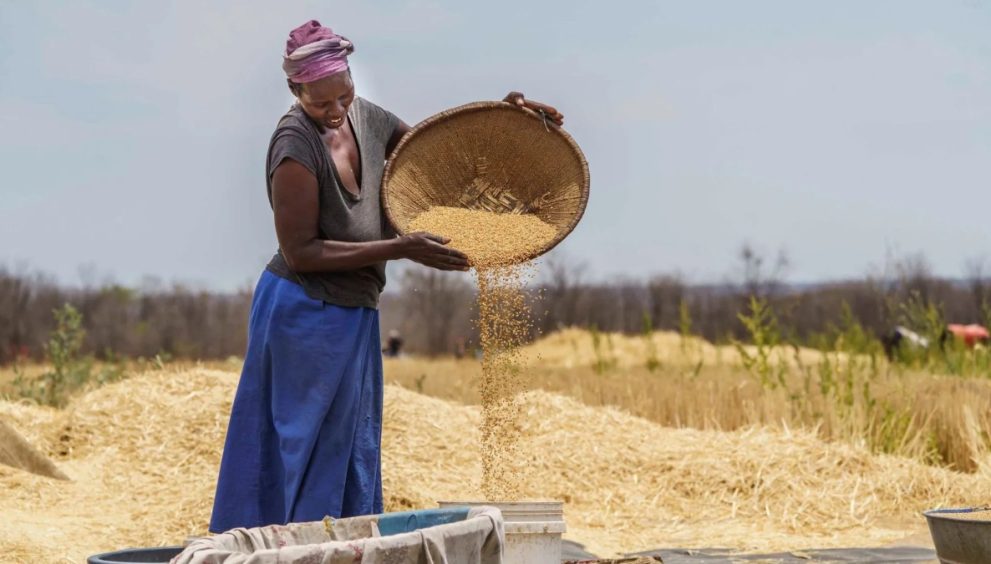MASVINGO, Zimbabwe – In the sun-drenched heart of Masvingo Province, a quiet revolution is taking root. The venerable Food and Agriculture Organisation of the United Nations (FAO), usually associated with boots-on-the-ground development, is now wielding the power of pixels and algorithms to transform Zimbabwe’s agricultural landscape. Their audacious “Fostering Digital Villages Initiative” (FDiVi) recently brought a vibrant Digital Fair to Bikita District. This event felt less like a conference and more like a glimpse into farming’s future.
Imagine a bustling marketplace, but instead of livestock and produce, it’s buzzing with farmers, budding agri-entrepreneurs, and tech whizzes all eager to explore the digital tools poised to unlock new levels of productivity, market access, and prosperity for rural communities. This wasn’t just a one-off spectacle; it’s part of a grander FAO vision to invigorate rural agriculture across Malawi, Rwanda, and Zimbabwe, harnessing cutting-edge digital solutions, including the much-hyped artificial intelligence (AI).
Patrice Talla, FAO Subregional Coordinator for Southern Africa and Representative to Zimbabwe, encapsulated the spirit of the initiative: “This project facilitates the delivery of cutting-edge agricultural extension services, boosts productivity, enhances market access, and supports inclusive rural transformation – especially for women and youth.” His words resonate with a palpable sense of hope for a sector long battling the vagaries of climate and market access.
At the Bikita fair, the air crackled with excitement. Participants, many of whom had perhaps only heard whispers of such technology, were suddenly engaging directly with AI-driven advisory services, navigating mobile market platforms, and experimenting with digital extension tools. For many, it was an epiphany, igniting a fresh wave of enthusiasm for digital transformation in their backyards.
Local leaders were quick to laud the effort. Bernard Hadzirambwi, the District Development Coordinator, observed sagely, “Rural innovation thrives when communities connect and interact with digital technology.” Nobert Chiduza, District Agricultural Extension Officer in the Ministry of Lands, Agriculture, Fisheries, Water and Rural Development, went further, emphasising that “Digital technologies are not just tools—they’re enablers of climate-smart agriculture and inclusive rural development. It’s encouraging to see our farmers quickly embracing these innovations.”
The FDiVi programme, a global flagship for the FAO, isn’t just about handing out gadgets. It’s about embedding digitalisation into the very fabric of rural development, tackling both the challenges on the farm and the broader socio-economic factors. In Zimbabwe, the initiative is meticulously rolling out in the Mhondoro-Ngezi and Bikita districts, where dedicated digital hubs are set to become beacons of progress. These hubs will offer the priceless trifecta of free internet access, computers, and vital digital literacy training for local communities, bridging the digital divide one byte at a time.
But the ambition extends beyond mere access. The initiative is meticulously designed to weave a stronger web connecting farmers, extension officers, agro-dealers, and processors to new markets and crucial information sources. This is about fostering economic inclusion and resilience, empowering rural areas to thrive in an increasingly connected world.
For young farmers like Sheunesu Njeke, a vibrant 26-year-old, the Digital Fair was a pivotal moment. “Before this,” he confessed, “I didn’t realise how much technology could transform farming. Now I’ve learned about AI tools to help plan my work better and connect with buyers right from my phone. It gives me confidence to explore new opportunities.” Njeke’s words are a powerful testament to the tangible impact of these initiatives on the next generation of agriculturalists.
Looking ahead, the FAO isn’t resting on its laurels. Plans are afoot to integrate these Digital Fairs into the annual District and Ward-level Agriculture Shows, ensuring that rural communities receive sustained exposure to the ever-evolving world of digital solutions. Furthermore, the initiative pledges ongoing support to the digital innovators, entrepreneurs, and farmers as they navigate their exciting and often challenging journey into the digital agricultural age. Zimbabwe’s fields, once tilled by hand and hope, are now poised for a digital harvest.




